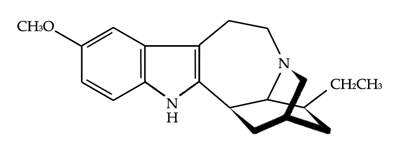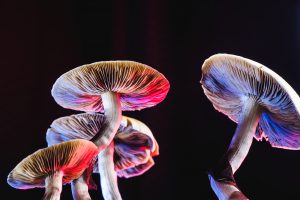The following psychedelics at-a-glance is a very basic “microdose” of some of the most widely discussed, used, and studied psychedelic medicines. By no means is it meant to give a full dissertation on them. While I researched myriad online resources, conversed with respected leaders in the field, and revisited my personal experiences, every single psychedelic experience is subjective.
Also, understand every human is very unique, and often times these medicines have effects separate from those listed. This includes whether it is used recreationally, therapeutically, or spiritually, as the effects vary greatly. Even standardized dosing is difficult to quantify, as physical makeup, overall health, and mental state also play massive roles.
The substances listed below may be potentially illegal and we do not encourage or condone illegal drug use. However, we understand that illegal drug use occurs and believe offering harm reduction information is imperative. Please do your own research before considering any of these medicines.

MDMA
3,4-Methylenedioxymethamphetamine
Other names: Molly, Ecstasy, Mandy
Class: Empathogen–entactogen, stimulant
Description: MDMA is a synthetic stimulant. It produces an energizing effect, distortions in time and perception, and enhanced enjoyment from sensory experiences. It has also been described as an entactogen, a drug that can increase self-awareness and empathy.
Legal Status: MDMA was classified as a Schedule I drug in the United States in 1985. However, that is expected to change within the next year.
Administration: MDMA is usually consumed in tablet form or crystal form. It is also sometimes snorted.
Dosing: Tablets usually contain 80-125mg of MDMA, but can also contain impurities as well.
Onset: 30-45 minutes, sometimes longer
Duration: 3-6 hours
Effects: Feelings of love and empathy, euphoria, altered physical/tactile sensation, increased energy, and enhanced sensation, perceptions, or sexuality. Does not typically produce hallucinations.
History: MDMA was first developed by Merck in 1912 as a psychotherapy tool (particularly with marriage counseling) because of its empathogenic effects. However, it ended up as a popular rave scene drug because it combines feelings of joy with increased energy.
Studies: Currently there are a number of studies being conducted and MDMA has received breakthough designation through the FDA as a treatment for PTSD. Studies are or have been conducted for PTSD, alcohol use disorder, autism, and effects on healthy patients.
Possible side effects: Serotonin syndrome, serotonin crash, dehydration, nausea/vomiting, insomnia, increased heart rate/pressure

LSD
Lysergic acid diethylamide
Other names: “L,” Lucy, acid, Cid, blotter, microdot
Class: Serotonergic psychedelic/hallucinogen
Description: LSD is an extremely potent hallucinogen. It is synthetically made from lysergic acid, which is found in ergot, a fungus that grows on rye and other grains.
Legal Status: LSD a Schedule I drug in the United States.
Administration: Solution-soaked paper, gel tabs, liquid
Dosing: Low: 25-50 micrograms, Substantial: 75-150 micrograms
Onset: 30-45 minutes, sometimes longer
Duration: 4-12 hours
Effects: Euphoria, hallucinations, tracers, visual distortions, increased music appreciation, analyzation enhancement, introspection, feelings of oneness, addiction suppression
History: LSD was first synthesized by Albert Hoffman in 1938 but it wasn’t until five years later when he accidentally ingested it that he learned the effects (and rode his bike home – see Bicycle Day). In the 1950s it was used as an experimental drug for psychotherapy and was later popularized by Timothy Leary until Harvard put the kabash on it. Fun fact: Bill Wilson, one of the founders of Alcoholics Anonymous, truly believed that healing would occur with the help of psychedelics (LSD).
Studies:Cluster headaches, alcoholism, trauma related pain, end of life anxiety, depression
Possible side effects: Dilated pupils, increased body temperature/heart rate/blood pressure, sleeplessness

DMT
Dimethyltryptamine
Other names: Deems, deemsters, Dimitri, spirit molecule
Class: Tryptamine
Description: DMT is a psychedelic drug that is found in many plants and animals, including humans. It has a rapid onset, intense effects, and a relatively short duration.
Legal Status: DMT is a schedule I drug.
Administration: Smoked or injected but can be ingested with an MAO inhibitor such as b. caapi, the other main ingredient in ayahuasca, which prolongs the experience.
Dosing: Low: up to 40mg, breakthrough: 50mg+, heroic: 60mg+. Ayahuasca doses vary at traditional ceremonies.
Onset: Immediate to one minute for freebase DMT. Ayahuasca onset is 30-45 minutes or longer.
Duration: DMT: 6-20 minutes. Ayahuasca: 6-12 hours.
Effects: Immersive effect, intense close-eyed visuals, powerful “rushing” sensation, radical perspective shift, encounters with beings
History: DMT was founded in the 1950s by Stephen Szára and in the 1960s it was discovered in the human body, which spurred a flurry of research. By the 1970s, it was restricted and research was halted until Dr. Rick Strassman led the first study in the 1990s.
Ayahuasca history goes back to indigenous people using the brew for centuries. Currently many Americans seek its healing properties in South America.
Studies: Effects on healthy subjects, brain activity, neuroplasticity, general mental health and wellbeing, ayahuasca study on prison inmates (Brasil)
Possible side effects: Intense experiences, overwhelming fear, increased body temperature/blood pressure/heart rate (in the beginning, then levels out), bliss state, ego dissolution, Machine Elves (check out Terrance McKenna).

Cacti (Mescaline)
3,4,5-trimethoxyphenethylamine
Other names: San Pedro, Peyote
Class: Psychedelic, tryptamine
Description: Mescaline occurs naturally in the peyote cactus, the San Pedro cactus, the Peruvian torch, and other species of cactus. Its effects are similar to LSD and psilocybin. It is most commonly used as a Native American and Mexican religious intoxicant.
Legal Status: In the United States, mescaline was made illegal in 1970 and is categorized as a Schedule I hallucinogen.
Administration: Oral, usually in a tea.
Dosing: Peyote: Light dose of peyote is 50-100g fresh (3-6 midsize buttons), moderate doses are up to 150g fresh, Strong doses range up to 200g or more Because mescaline is naturally occurring, it is difficult to judge dose.
Onset: 30-45 minutes, sometimes longer.
Duration: 5-8 hours, but may last longer
Effects: Deep introspection, feeling insightful, calm, meditative, feelings of hope
History: It has been commonly used as a Native American and Mexican religious intoxicant.
Studies: Studies are limited but there are a few revolving around alcoholism and anxiety.
Possible side effects: Nausea/vomiting, sweating/chills, confusion or difficulty concentrating

Ibogaine
Other names: none
Class: Psychedelic dissociative, tryptamine
Description: Ibogaine is a naturally occurring psychoactive plant and is one of the most powerful psychedelics. It can help treat addiction but also has far more side effects than other psychedelics, including death.
Legal Status: Ibogaine has been a Schedule I drug since 1967.
Administration: Oral (tea), tablet/pill
Dosing: Facility dose: 15-20mg/kg. Doses will vary at a traditional ceremony. Pure ibogaine dosages are much smaller than those of iboga powder. In low dosages, the drug increases energy and acts as a stimulant. In higher doses, it can have psychedelic effects.
Onset: 1-3 hours
Duration: 3-36 hours (No, that is not a typo.)
Effects: Psychological introspection, awakened “dream state,” not known as being a pleasant experience.
History: Iboga plants are used for medicinal and ritual purposes in African spiritual traditions. It was first promoted in the West as having anti-addictive properties in 1962 by Howard Lots of, who was a heroin addict himself. Clinics have emerged in Mexico and Costa Rica and is used in some churches around the U.S.
Studies: Opioid addiction (Mexico, New Zealand), alcoholism (Brasil), HIV, nerve disorders
Possible side effects: Difficulty with coordination on onset, nausea/vomiting when moving, heart issues, death – this is one of the only psychedelics that can result in death. Administration should be under direct supervision of a physician or similar.

Psilocybin (Psilocin)
Mushrooms
Other names: Magic mushrooms, shrooms, mushies
Class: Tryptamine
Description: Psilocybin or magic mushrooms are naturally occurring and are consumed for their hallucinogenic effects. When psilocybin is taken, it is converted in the body to psilocin, which is the chemical with the psychoactive properties.
Legal Status: Psilocybin is classified as a Schedule I drug in the United States. However, that is expected to change in the near future.
Administration: Eaten raw or dried, can be brewed into tea or ground and put into capsules for microdosing.
Dosing: Microdose: .1-.5g, Low dose: 1-2.5g, Normal dose: 3-3.5g, Heroic dose: 5g+ (in a dark room.. Google Terrance McKenna for details)
Onset: 30-45 minutes, sometimes longer. When using the lemon tek technique, onset is much faster.
Duration: 4-6 hours, but may last longer
Effects: Mood lift, tactile enhancement, feelings of wonder, hallucinations (in higher doses), increased giggling/laughing, color enhancement, perspective distortions, emotion enhancement, empathy, social enhancement, introspection, and love
History: Mushrooms have long been consumed in spiritual and divinatory ceremonies. McKenna proposed that African ancestors used magic mushrooms for visual effects and to aid hunting. He also theorizes that psilocybin caused the primitive brain to expand in its information processing abilities, stating that early humans “ate (their) way to consciousness.” (Check out Stoned Ape Theory)
Studies: Currently there are a number of studies being conducted and psilocybin has received breakthough designation through the FDA as a treatment for depression. Studies are or have been conducted for cluster headaches, OCD, substance abuse, and more.
Possible side effects: Nausea/vomiting, feelings of impending doom (during come up), confusion





